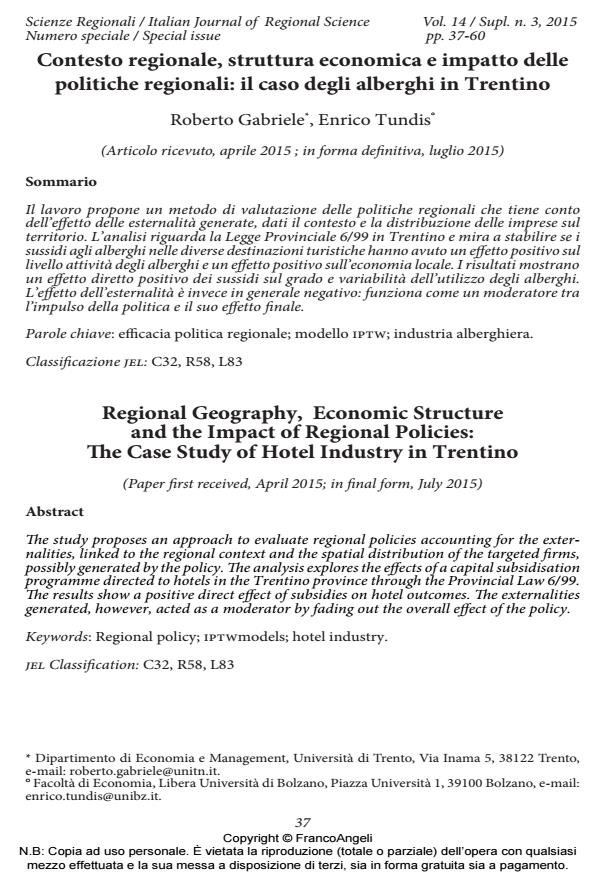Regional Geography, Economic Structure and the Impact of Regional Policies: The Case Study of Hotel Industry in Trentino
Journal title SCIENZE REGIONALI
Author/s Roberto Gabriele, Enrico Tundis
Publishing Year 2015 Issue 2015/3 Suppl.
Language Italian Pages 23 P. 37-59 File size 437 KB
DOI 10.3280/SCRE2015-S03003
DOI is like a bar code for intellectual property: to have more infomation
click here
Below, you can see the article first page
If you want to buy this article in PDF format, you can do it, following the instructions to buy download credits

FrancoAngeli is member of Publishers International Linking Association, Inc (PILA), a not-for-profit association which run the CrossRef service enabling links to and from online scholarly content.
The study proposes an approach to evaluate regional policies accounting for the externalities, linked to the regional context and the spatial distribution of the targeted firms, possibly generated by the policy. The analysis explores the effects of a capital subsidisation programme directed to hotels in the Trentino province through the Provincial Law 6/99. The results show a positive direct effect of subsidies on hotel outcomes. The externalities generated, however, acted as a moderator by fading out the overall effect of the policy.
Keywords: Regional policy; iptwmodels; hotel industry.
Jel codes: C32, R58, L83
- Seasonal work in the Italian tourism industry: a systematic literature review Fabio Gaspani, Silvia Mazzaglia, in Cambio. Rivista sulle Trasformazioni Sociali /2025 pp.17
DOI: 10.36253/cambio-16641
Roberto Gabriele, Enrico Tundis, Contesto regionale, struttura economica e impatto delle politiche regionali: il caso degli alberghi in Trentino in "SCIENZE REGIONALI " 3 Suppl./2015, pp 37-59, DOI: 10.3280/SCRE2015-S03003